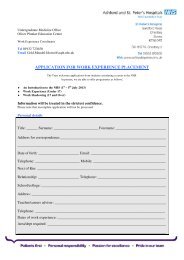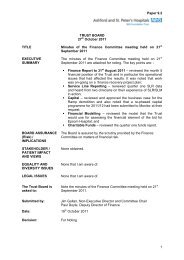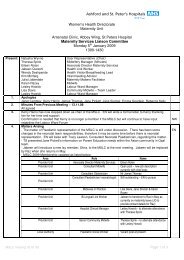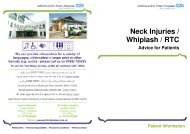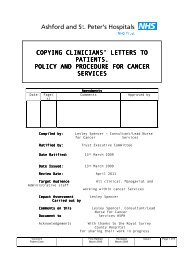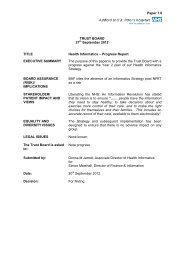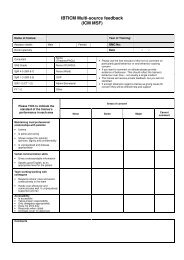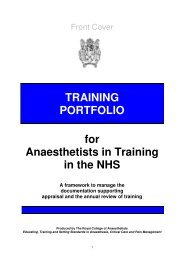Procedure for tracheal bronchial suctioning in adults.pdf
Procedure for tracheal bronchial suctioning in adults.pdf
Procedure for tracheal bronchial suctioning in adults.pdf
Create successful ePaper yourself
Turn your PDF publications into a flip-book with our unique Google optimized e-Paper software.
Volume 8<br />
Patient Care<br />
Complication Action Rationale<br />
7.1 Respiratory distress • Withdraw suction catheter.<br />
• Monitor vital signs.<br />
• Consider supplementary oxygen.<br />
• Seek medical advice if<br />
7.2 Reduction <strong>in</strong> level of<br />
consciousness<br />
8. REFERENCES AND BIBLIOGRAPHY<br />
respiratory distress cont<strong>in</strong>ues.<br />
• Withdraw suction catheter<br />
immediate.<br />
• Assess airway.<br />
• Adm<strong>in</strong>ister 100% oxygen.<br />
• Call <strong>for</strong> help.<br />
7.3 Blood sta<strong>in</strong>ed sputum • Report to medical staff.<br />
• Ensure correct sized suction<br />
catheter used.<br />
• Avoid <strong>in</strong>sertion of catheter until<br />
resistance felt estimate<br />
approximate level of <strong>in</strong>sertion of<br />
suction catheter.<br />
• Ensure suction pressures used<br />
are 13.5-20Kpa.<br />
• Ensure once suction catheter is<br />
<strong>in</strong>serted <strong>in</strong>to tracheostomy it is<br />
kept mov<strong>in</strong>g when suction<br />
7.4 Tenacious Sputum –<br />
m<strong>in</strong>imal amount on<br />
suction<br />
applied.<br />
• Consider use of humidification<br />
• Adjust suction pressure to<br />
maximum of 20kpa<br />
• Take a sample of sputum <strong>for</strong><br />
culture and sensitivity<br />
• In<strong>for</strong>m medical staff<br />
Complication Action Rationale<br />
7.5 Suspected occlusion<br />
or resistance <strong>in</strong> <strong>in</strong>ner<br />
cannula<br />
• Immediately withdraw suction<br />
catheter.<br />
• Remove <strong>in</strong>ner cannula and<br />
<strong>in</strong>spect.<br />
• Replace with new <strong>in</strong>ner cannula.<br />
• Seek medical advice.<br />
• If patient exhibits signs of<br />
respiratory distress per<strong>for</strong>m<br />
procedure <strong>for</strong> suspected blocked<br />
tracheostomy tube.<br />
Carroll PF (1993) Safe suction PRN Registered Nurse, 57,5,32-37.<br />
Ratified<br />
May 2006<br />
To avoid hypoxaemia.<br />
To avoid trauma to the<br />
bifurcation of the trachea.<br />
To prevent <strong>in</strong>vag<strong>in</strong>ation of<br />
the mucosa through the<br />
catheter end and hole.<br />
To prevent blockage of<br />
tube and subsequent<br />
respiratory arrest.<br />
Reviewed Issue 1 Page 6 of 8




